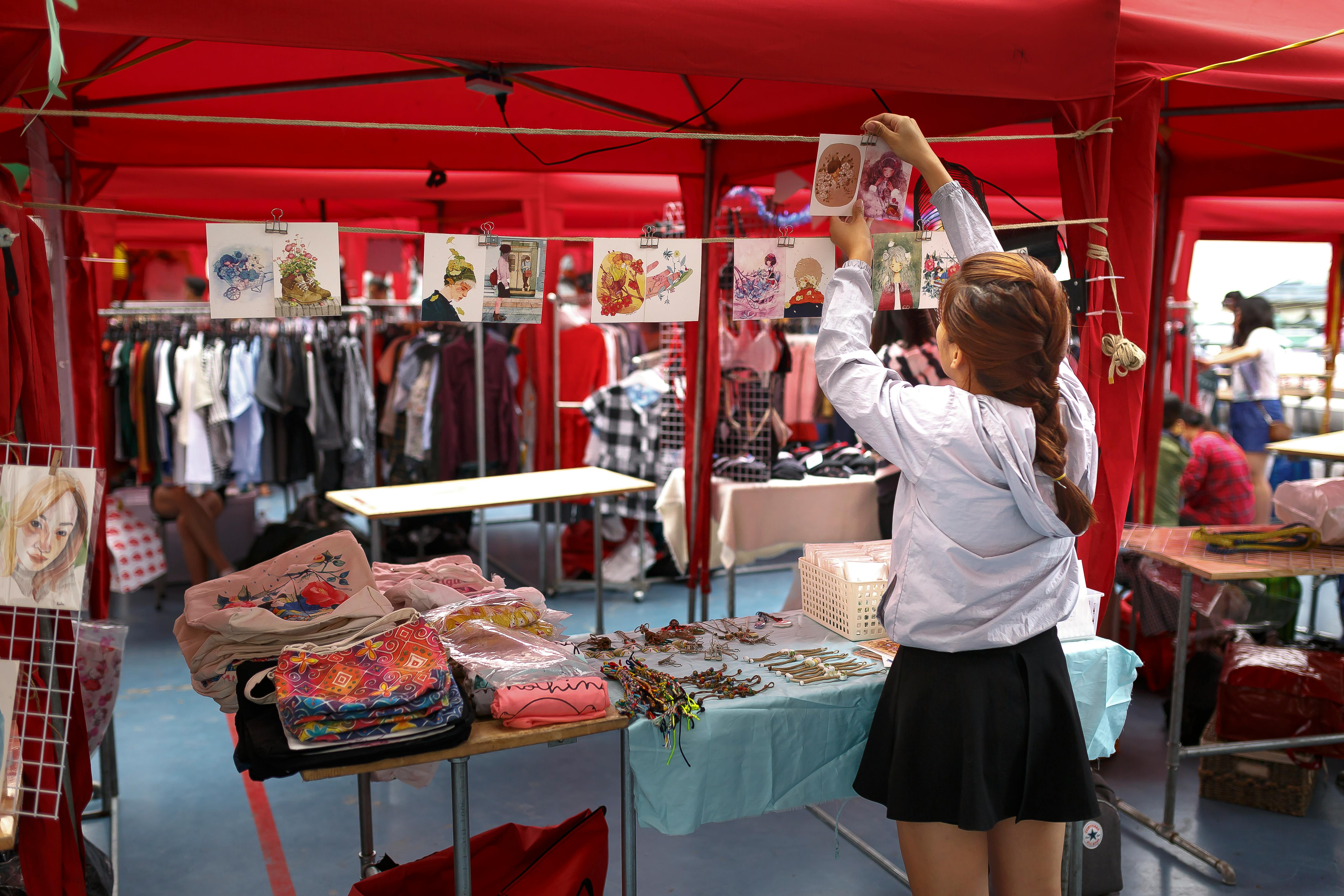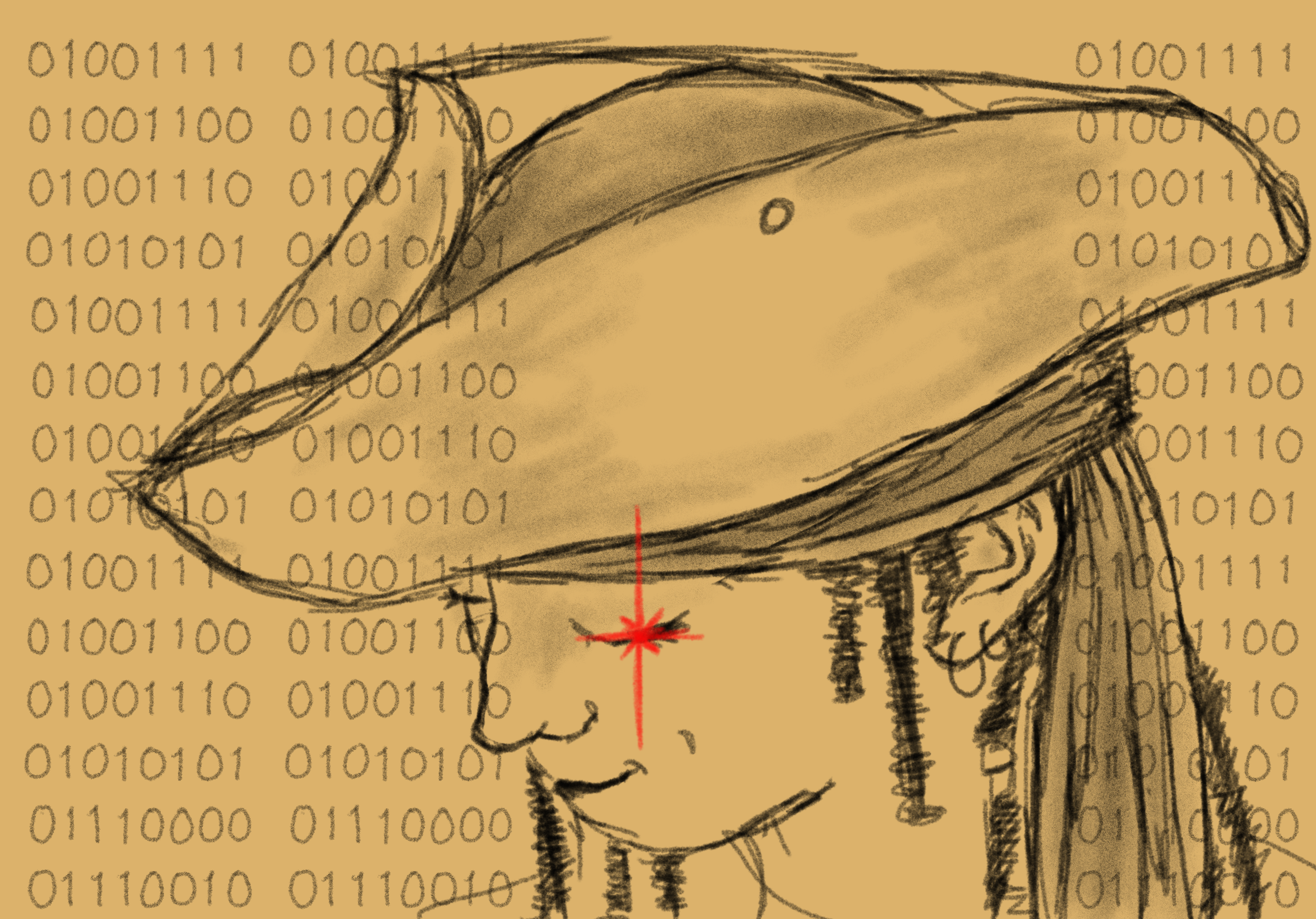
The Visual Arts Course Union at UBCO has established itself as a place where students have the opportunity to expand and develop their artistic practices beyond the campus and to form a community of people with similar artistic interests. Normally, this includes a lot of in-person events, activities, and collaboration, so this year things look a bit different, to say the least. We spoke over Zoom to Briar Craig, a professor in Creative Studies and Visual Arts, as well as Miah, Tiffany, and Leah, members of the Course Union, about the newfound approaches to teaching, critiques, producing art, and their annual fundraising gala Art on the Line.
Jayme: Firstly, I want to ask you about the Visual Arts Course Union this year and how it’s working. I saw that you have a Discord—is that a new thing you’re trying out and how is it working for you?
Miah: Yes, Discord is new. Hannah, who’s our media rep from last year and a big gamer, suggested that since we’re all going online anyway, that we should use this platform (which a lot of gamers use) to simultaneously chat with each other. We're still trying to figure out what people want to do with it. In terms of classes, we’re also starting to get students to post their work before critiques in order to get even more feedback, which is great as it opens up the critiques to not only those students who are in your classes, but to everyone in the visual arts program. And in terms of social things, we’re going to start doing game nights, just for everyone to get together and have fun—we’re all missing that a lot right now. Discord allows us to share information across clubs, unions, and classes; it’s a fantastic resource for us.
Jayme: Tell me more about how classes and critiques are working right now.
Tiffany: Critiques are pretty tough. We have to submit high-resolution pictures of our work— they have to be displayed very well. It’s a bit difficult, especially if you don't have the proper equipment. But you can also still rent equipment, which is helpful.
Briar: UBC dictates that everything is delivered online. So for me, everything is delivered through Zoom meetings. But then the printmaking studio, which is primarily where I teach, is open for people who choose to come to campus and feel safe doing so. They have to book out the space and go through all the proper protocols, which makes it clear to us that they understand the things that are necessary to do to make the space safe to use. So print studios, which would normally have classes of 18, can now hold six students maximum. So we can't actually run any classes in them, but people can come in and get work. And I'm around five or six days a week so that if people come into the studio, I can coach them one on one.

Jayme: I’m wondering how you think this whole situation is going to change the nature of the works that are produced this year and in the foreseeable future—different approaches, different ideas…
Tiffany: For me, personally, I moved back home with my parents, which has been an adjustment. But I'm also in a rural setting now, so I'm a lot closer to nature now, and that's informing my artwork much more. I also have access to different materials—I'm working on log cookies, because my fiancé’s dad is a logger, so I'm able to get resources that are different, and work with it as I go. I think that's informing my artwork a lot more than if I would have stayed in Kelowna this year.
Briar: There’s an effort being made by lots of people to look on the bright side. Of course, direct experience in the visual arts is always paramount, it can't be substituted for a virtual experience, it's just never going to be that. And it shouldn't be that. But we're finding that delivering things in a virtual reality is different, but at times quite effective. And it might inform how classes are run in the future. It won’t replace what we used to do, but it can be a supplement to what we used to do. So, I think, just like Tiffany is doing, visual arts students tend to respond to their environments in really effective ways. Because we are observers, we tend to work with what's available. So, there are plenty of instances where we’re realizing that, in some ways, this has been a fantastic turn of events. But, on the other hand, I'm also dealing with people who are really struggling in their classes every week, because they haven't seen or spoken to anybody in weeks, and they’re trying to make all of their artwork while sitting on their couch, and they never leave the house. So, of course, there are good things and there are devastatingly bad things too.
Miah: Just to add another example to Briar’s point, at the end of last year, it was devastating to have to shift in six weeks to doing the fourth-year exhibition online, which is normally an exciting and in-person event that students work on all year long. It was incredibly challenging. But the flip side of that is that because it was online, the exposure that the students received was immensely higher than ever before: our data shows that in previous years, the largest number of views that the work received on any social media platform was 313. But when we last looked at the numbers for last year’s show, it was well over 200,000! And we could also see that people were viewing it from all over the world: Italy, South Africa, and China, to name a few. So that was amazing, and now we’re trying to figure out what strategies we want to keep moving forward.

Jayme: Can you briefly tell me what Art on the Line is and how you’re approaching it this year?
Tiffany: Art on the Line is a fundraiser for the VACU which raises money for travel grants, the fourth-year exhibition show, events, and other things related to the Visual Arts Course Union. This year, of course, it’s going to be online. Students and other artists donate works that are judged by a jury before being accepted for the gala. Then people can buy tickets to attend at a cost of $200, which guarantees you a piece of artwork, or you can buy a $5 ticket just to attend and watch the event. Everyone will get a chance to view all the artworks and write down their favourites before there’s a raffle in which names are drawn to choose which piece they would like. We’re working with a local company called Trellis who specializes in online events to support in-person fundraising—they’re really great.
Right now, we’re taking submissions from local artists who are both emerging and professional. We’re asking for high-quality images for now, and then they’ll go through a jury process before being potentially selected. Anyone interested can send their images to aotl@ubcovacu.org and the final deadline for submission is February 5th, 2021.
Miah: There are a couple of things that will be an advantage to going online this year. By having people view the works online, we will also be able to link to the artists’ social media accounts and to their websites. So now it also becomes more interactive; not only is your piece chosen as part of the curated exhibition, but you have the opportunity for your art to be promoted online. That's a pretty great opportunity.
Join the VACU Discord – meetings every Tuesday at: https://discord.gg/jFqyg6Df
Art on the Line takes place on 27 February 2021.
If you’d like to submit artwork for AOTL, send high-quality images to: aotl@ubcovacu.org




